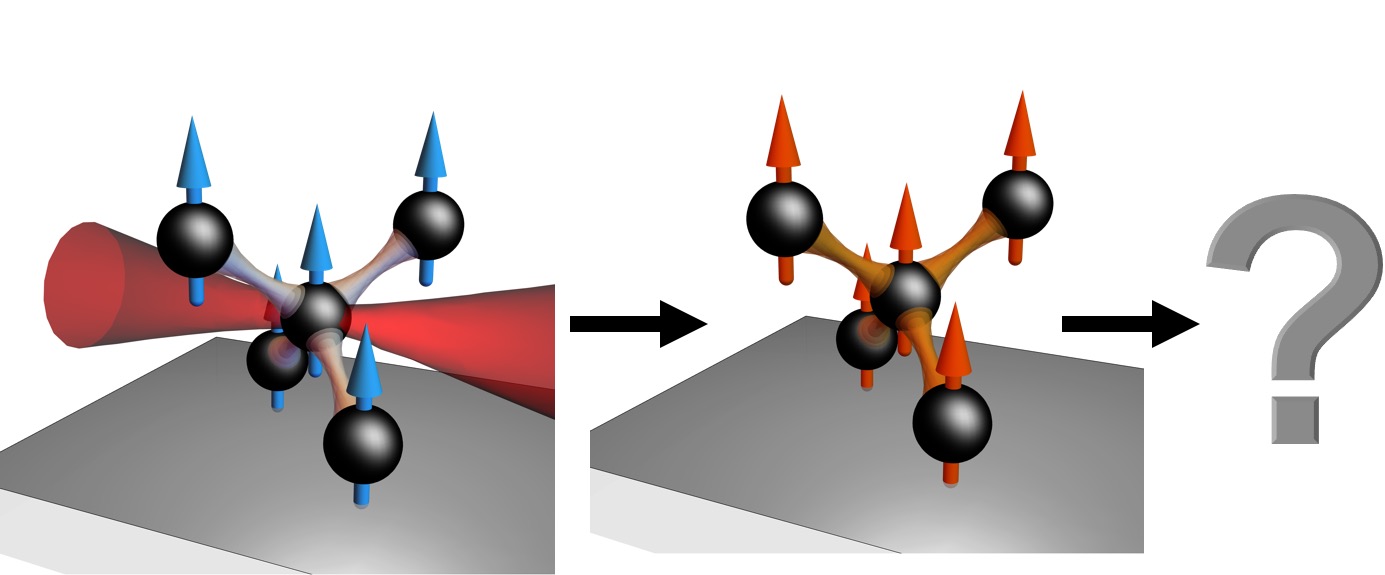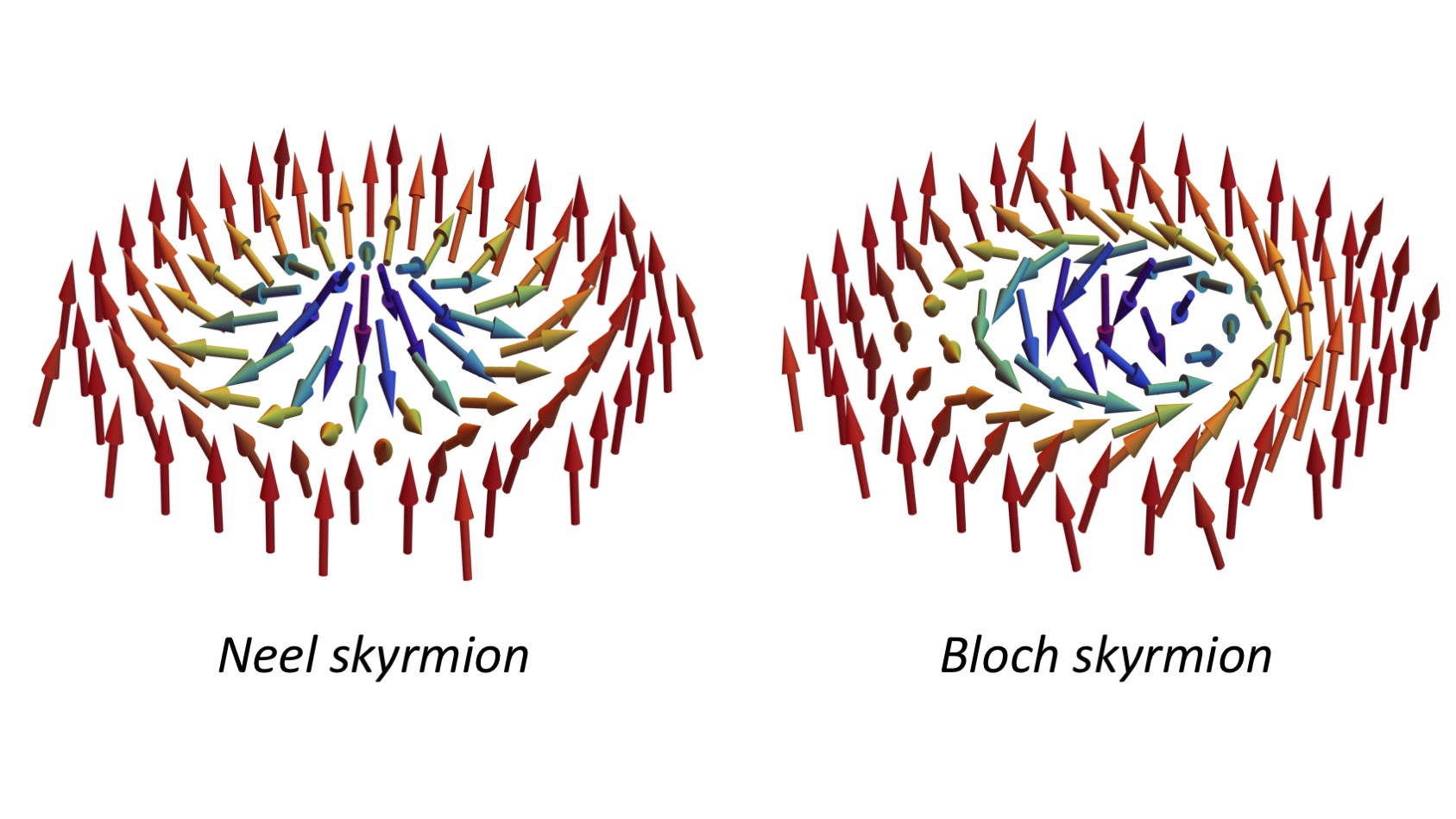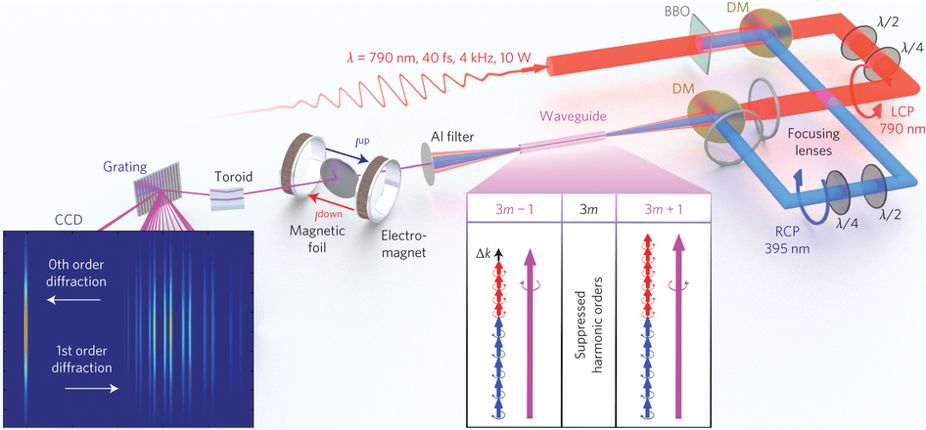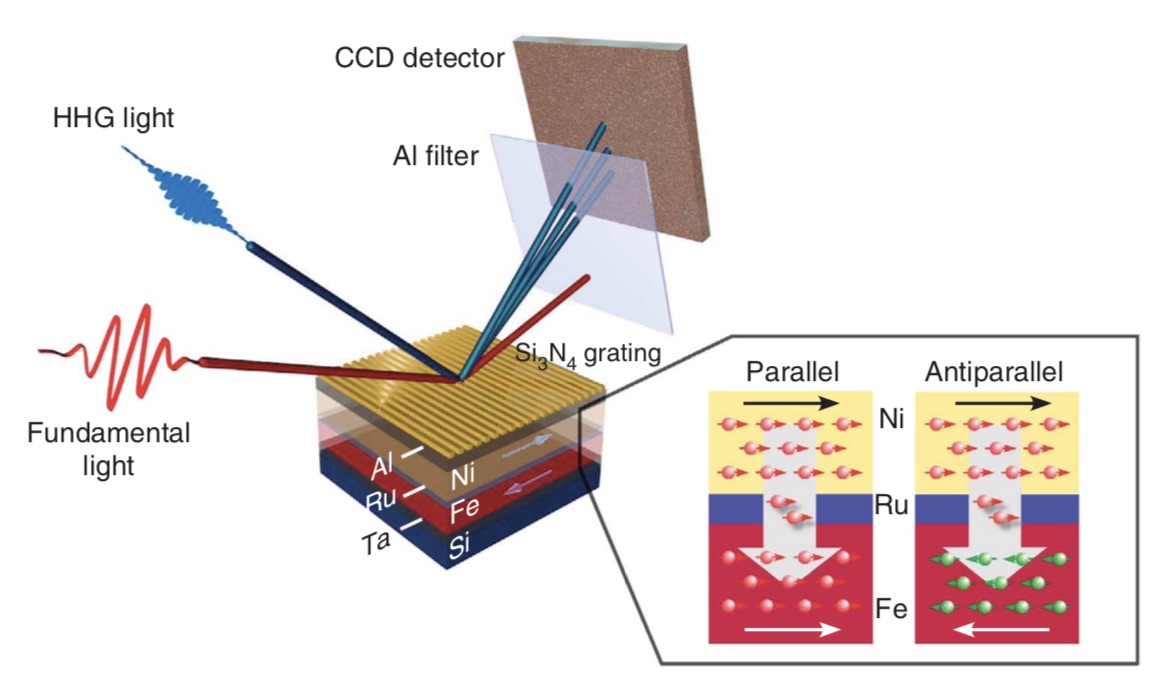Ultrafast electron, spin, and phonon dynamics

The timescales of electrons in your smartphone are much different than your daily timescales. For example, you are walking down a crowded street and bumping other people every second. An electron in your smartphone, however, can bump other electrons every few femtoseconds (10-15seconds). Let’s assume you will walk through on that street for your whole life and bump every second, your total number of scattering would be 2.2 billion (2.2 109). One electron can perform the same number of scattering only in 80 microseconds. If the electron dynamics are that fast and these dynamics are in our interest to understand materials properties, how can we probe these dynamics at femtoseconds timescales?
Indeed, there are advanced laser pulses with only a few femtoseconds pulse duration. By using multiple of these pulses, we probe electron dynamics not only at an equilibrium state but also at non-equilibrium states, which is a key to understand forces and interactions in materials. Particularly, these interactions take place between electrons and also among spins and phonons. By studying, electron, spin, and phonon dynamics in materials, we understand fundamental interactions among them to explain known moot properties and discover new properties.
For instance, the figure above describes a simple experiment we perform. A laser pulse excites electrons that have spins–magnetization and creates non-equilibrium states in the materials, which can mean also heating the electron system with a few thousands of degrees. How electron, spin, and phonon system response to this non-equilibrium state is a material dependent phenomena and usually very complicated. Probing magnetic and electronic states as the system goes back to the equilibrium is greatly useful to understand this complexity.
Topological spin textures

Skyrmions are particle-like magnetic objects, whose sizes can range from few to hundreds of nm. They can be found in magnetic material systems without inversion symmetry. This inversion symmetry can be broken by either at the interfaces or in the bulk of the material, or combination of both. Magnetic skyrmions are paid great attention because of two aspects. The first one is that they are topologically non-trivial with unique properties. Secondly, they can be manipulated with very low critical charge currents, which makes them a promising candidate for future power-efficient computational architectures.
Collaborative research with ECE department on high-frequency spin dynamics
Spinwaves–magnons

Spinwaves are waves in the nature carried by the spin degree of freedom. They are excitations in the spin system like phonons that are in the lattice. By studying phonon spectrum of a particular system, we can learn about its crystal structure and lattice dynamics. Similarly, by studying spinwave spectrums, i.e. resonance spin dynamics, we can learn about the spin texture of a system. For example, ferromagnetic materials have a uniform resonance, i.e. all the spins precess coherently. The frequency of this resonance can be a hint for quantifying magnetization, anisotropies, and other properties. Another example would be the skyrmion system that can have unique spin resonances. By studying magnetic field- and microwave frequency-dependent spin resonances, we identify the dynamical properties of skyrmions and interactions between them.
Circularly polarized high-harmonics

Superdiffusive spin currents

